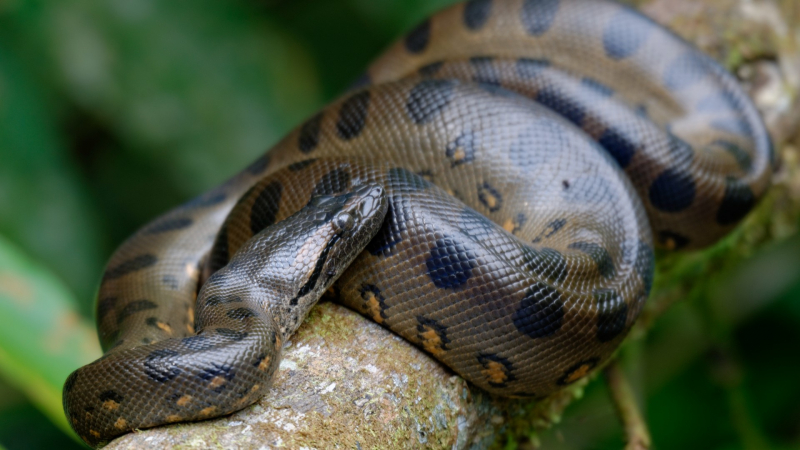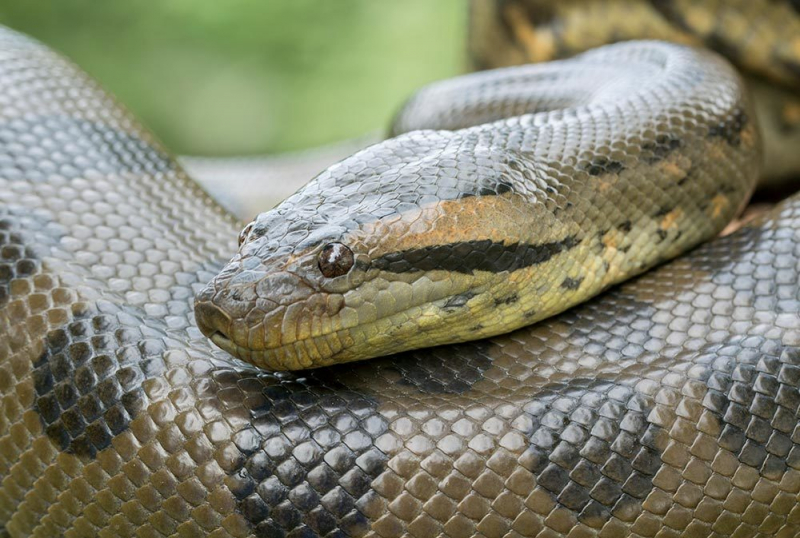Anacondas
Anacondas, often known as water boas, are a genus of enormous snakes. They live in tropical South America. There are now four species recognized. Although the name refers to a genus of snakes, it is frequently used to refer to only one species, the common or green anaconda (Eunectes murinus), which is the world's largest snake by weight and the second longest.
The name anaconda is derived from the name of a snake from Ceylon (Sri Lanka) described in Latin by John Ray in his Synopsis Methodica Animalium (1693) as serpens indicus bubalinus anacandaia zeylonibus, ides bubalorum aliorumque jumentorum membra conterens. Dr. Tancred Robinson provided Ray with a catalog of snakes from the Leyden museum, but the description of its behavior was based on Andreas Cleyer, who described a giant snake that crushed enormous animals by coiling around their bodies and crushing their bones in 1684. According to Henry Yule's Hobson-Jobson, the word gained popularity as a result of a piece of fiction published in Scots Magazine in 1768 by a certain R. Edwin. Edwin described a 'tiger' being crushed to death by an anaconda, despite the fact that tigers were never found in Sri Lanka. Yule and Frank Wall determined that the snake was a python and proposed the Tamil term anai-kondra, which means "elephant killer."
According to Andy, the writer on Natience.com, they are known as water boas and belong to the genus Eunectes. The Eunectes genus includes a group of snakes known as water snakes. Anacondas reside in South America's lush jungles and can be found in the rivers there. Anacondas are classified into four subspecies. The green anaconda is the largest of these. It is the world's heaviest snake and the second longest, after the reticulated python. Sloths, as we all know, enjoy swimming and are pretty proficient at it. Any anaconda that comes upon them in the water will have an easy meal. An anaconda is a type of constrictor. This implies they will coil their entire bodies around their victim until it dies. If they catch a sloth in the water, they have almost no chance of surviving.











